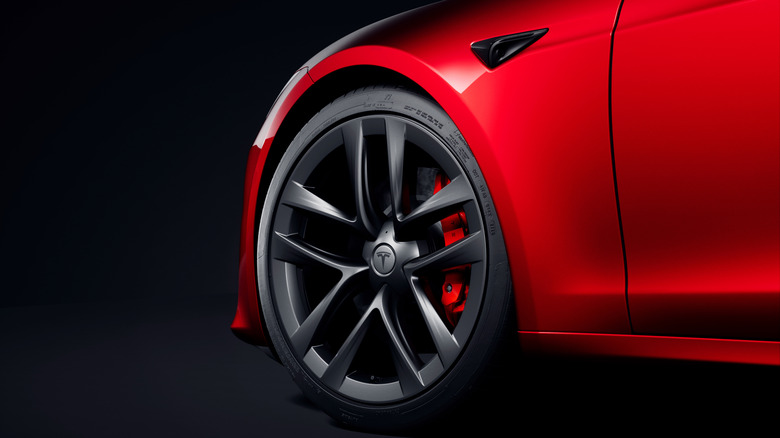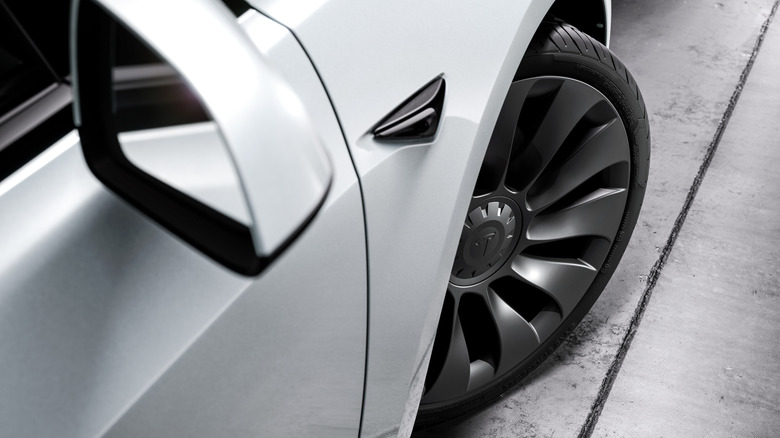This Helpful Tesla Feature Should Be On Every New Car
We may receive a commission on purchases made from links.
With the average price of gasoline approaching $4 per gallon in most of the U.S.A. and peak driving season still ahead, Tesla owners are saving a small fortune on fuel costs. But unfortunately, that's not the case when they visit the local tire store. Tesla-approved tires are downright pricey, mostly due to the noise-quieting foam that's inside, as well as extra sturdy construction to support the weight of hefty battery packs.
But not to worry — Tesla has your back by attempting to detect tire wear, which can help avoid early tire replacement or a potentially dangerous driving condition. In a late-2021 over-the-air software update, functionality was added to detect if one or more tires are wearing unevenly from other tires or may just be due for replacement from natural use.
While the exact methodology to accomplish this is unknown, we suspect that Tesla vehicles are monitoring the tires' rotational speed, then comparing that measurement to either a preset figure or the data collected from the other tires on the vehicle. Quite simply, a tire that is getting slightly smaller in diameter due to decreasing tread depth will turn faster.
Once detected, the offending tire(s) can either be replaced or rotated, which means moving to a different position on the vehicle. For example, a rear-wheel drive car will wear out rear tires faster than front tires, so the tires can periodically be swapped front to rear to create a more even rate of wear. A tire that's wearing unevenly can also indicate a larger mechanical problem with the vehicle, such as the need for a suspension/steering alignment.
Other cars have a more basic version
It's worth mentioning that several other automakers including Honda, Mazda, and Volkswagen also measure tire rotational speed as it relates to tire health. In certain vehicles, it's used as an alternate method to in-wheel Tire Pressure Monitoring System (TPMS) sensors to indicate if a tire is losing air pressure and/or going flat from a puncture. However, detecting a large change in rotational speed from a tire rapidly going flat is much easier than measuring a scant couple of millimeters of wear, whether abnormal or regularly occurring.
According to tire manufacturer Continental, brand-new tires have an average tread depth of 8 to 9 millimeters and require replacement at a legal limit of 1.6mm, although some motorists replace them at 2 to 3mm. In any case, that's a very small range to make accurate recommendations regarding wear via measuring rotational speed.
So, while Tesla definitely gets an A for effort, the execution is less than perfect. Message boards such as Reddit and Tesla Motors Club are full of owners who are experiencing issues with the system, primarily false alarms.
With over 50% of all new vehicles sold expected to be electric by the year 2030, extending the life of expensive EV tires as long as possible is clearly an admirable goal, so once again, kudos to Tesla for taking the first step toward passive monitoring.
In the meantime, if you want to take a more active role in your car's tire health — whether EV or ICE — you can periodically assess tread depth with an old-fashioned tire tread depth gauge, available for just a few dollars at auto parts stores, big box retailers, or online.

